Alexander Vedernikov
TCCT-Net: Two-Stream Network Architecture for Fast and Efficient Engagement Estimation via Behavioral Feature Signals
Apr 15, 2024Abstract:Engagement analysis finds various applications in healthcare, education, advertisement, services. Deep Neural Networks, used for analysis, possess complex architecture and need large amounts of input data, computational power, inference time. These constraints challenge embedding systems into devices for real-time use. To address these limitations, we present a novel two-stream feature fusion "Tensor-Convolution and Convolution-Transformer Network" (TCCT-Net) architecture. To better learn the meaningful patterns in the temporal-spatial domain, we design a "CT" stream that integrates a hybrid convolutional-transformer. In parallel, to efficiently extract rich patterns from the temporal-frequency domain and boost processing speed, we introduce a "TC" stream that uses Continuous Wavelet Transform (CWT) to represent information in a 2D tensor form. Evaluated on the EngageNet dataset, the proposed method outperforms existing baselines, utilizing only two behavioral features (head pose rotations) compared to the 98 used in baseline models. Furthermore, comparative analysis shows TCCT-Net's architecture offers an order-of-magnitude improvement in inference speed compared to state-of-the-art image-based Recurrent Neural Network (RNN) methods. The code will be released at https://github.com/vedernikovphoto/TCCT_Net.
Analyzing Participants' Engagement during Online Meetings Using Unsupervised Remote Photoplethysmography with Behavioral Features
Apr 05, 2024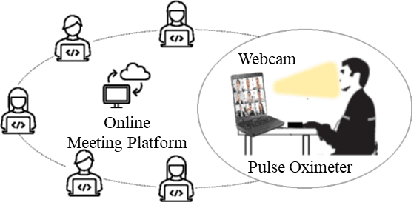

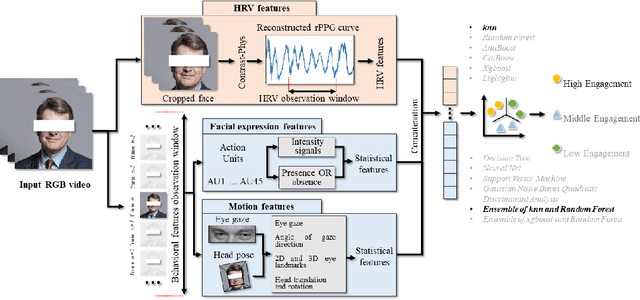

Abstract:Engagement measurement finds application in healthcare, education, advertisement, and services. The use of physiological and behavioral features is viable, but the impracticality of traditional physiological measurement arises due to the need for contact sensors. We demonstrate the feasibility of unsupervised remote photoplethysmography (rPPG) as an alternative for contact sensors in deriving heart rate variability (HRV) features, then fusing these with behavioral features to measure engagement in online group meetings. Firstly, a unique Engagement Dataset of online interactions among social workers is collected with granular engagement labels, offering insight into virtual meeting dynamics. Secondly, a pre-trained rPPG model is customized to reconstruct accurate rPPG signals from video meetings in an unsupervised manner, enabling the calculation of HRV features. Thirdly, the feasibility of estimating engagement from HRV features using short observation windows, with a notable enhancement when using longer observation windows of two to four minutes, is demonstrated. Fourthly, the effectiveness of behavioral cues is evaluated and fused with physiological data, which further enhances engagement estimation performance. An accuracy of 94% is achieved when only HRV features are used, eliminating the need for contact sensors or ground truth signals. The incorporation of behavioral cues raises the accuracy to 96%. Facial video analysis offers precise engagement measurement, beneficial for future applications.
Measuring Non-Typical Emotions for Mental Health: A Survey of Computational Approaches
Mar 09, 2024
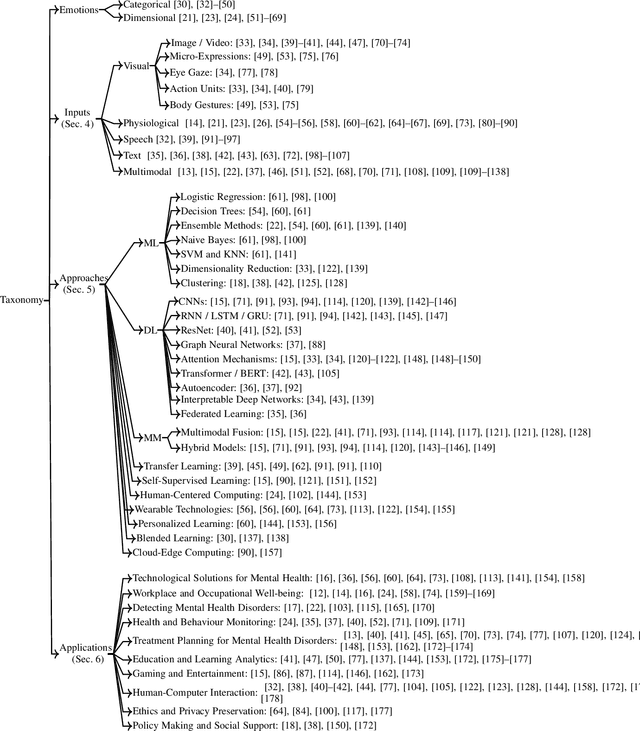
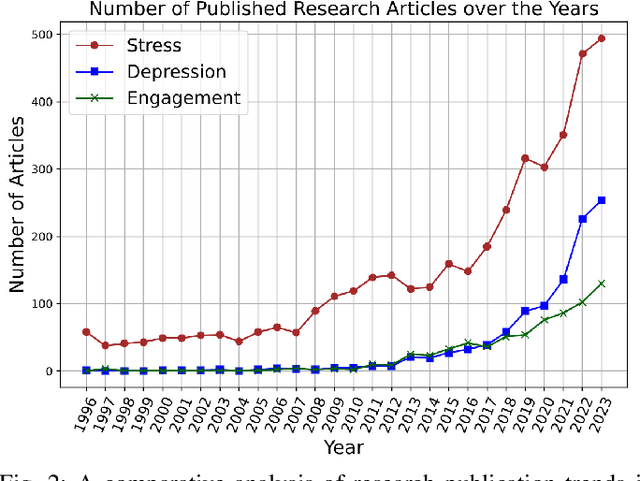
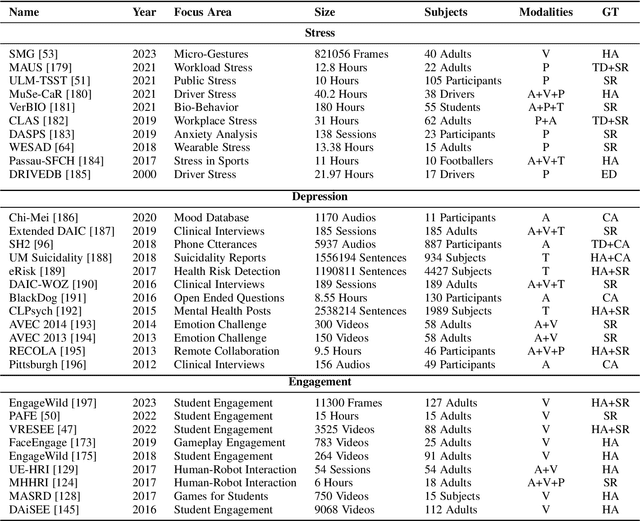
Abstract:Analysis of non-typical emotions, such as stress, depression and engagement is less common and more complex compared to that of frequently discussed emotions like happiness, sadness, fear, and anger. The importance of these non-typical emotions has been increasingly recognized due to their implications on mental health and well-being. Stress and depression impact the engagement in daily tasks, highlighting the need to understand their interplay. This survey is the first to simultaneously explore computational methods for analyzing stress, depression, and engagement. We discuss the most commonly used datasets, input modalities, data processing techniques, and information fusion methods used for the computational analysis of stress, depression and engagement. A timeline and taxonomy of non-typical emotion analysis approaches along with their generic pipeline and categories are presented. Subsequently, we describe state-of-the-art computational approaches for non-typical emotion analysis, including a performance summary on the most commonly used datasets. Following this, we explore the applications, along with the associated challenges, limitations, and future research directions.
 Add to Chrome
Add to Chrome Add to Firefox
Add to Firefox Add to Edge
Add to Edge